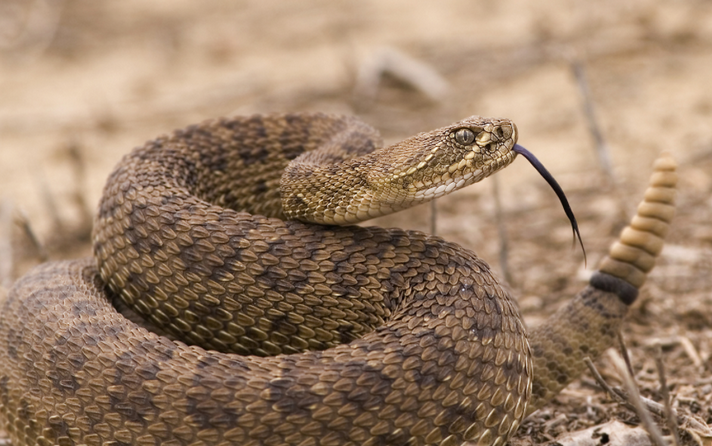The Patrol also reminds the the hikers and the bikers especially to watch for snakes as many trails are more obscured than usual this year with the abundant and high grass. Rattlesnakes can strike 2/3rds their length, and they are wonderfully camouflaged in the same color grass.
Hikers should be wearing boots and long loose pants; mt. bikers slow down so you don't run over them (and get bit in the process), and equestrians should really listen to their horses who can hear and smell them way before their riders can.
SNAKE FACTS
Most people bitten by rattlesnakes have inadvertently stepped or ridden over them. They detect movement by sensing vibrations in the ground. Their eyes see well even in low light. Rattlesnake bites can be dangerous but are very rarely fatal to humans. With proper medical treatment, including antivenin, bites are usually not serious.
NOT ALL RATTLE
Young rattlesnakes do not yet have their rattles, though they are as dangerous as adults, according to the National Park Service at Yosemite. Furthermore, some adults may lose their rattles, so it is a good idea look out for the triangular head.
After the rattle, rattlesnakes’ most distinctive physical feature is their triangular head. Also, they have vertical pupils, like cat’s eyes. (In Folsom Lake, rattlesnakes that rattle get killed, those that don't...don't. Meaning that after several generations, we have many families of silent snakes.)
RATTLESNAKES ARE LOCAL
Generation after generation of rattlesnake will use the same dens, sometimes the same den for more than 100 years. Upon leaving their dens, they like to sun themselves on rocks and other open places. Though they are not nocturnal, in the hot summer months they may be more active at night.
Despite their venom, rattlesnakes are no match for California King snakes, which are fond of putting them on their dinner menus. DON'T KILL CALIFORNIA KING SNAKES! (picture below)
| California Mountain King Snake | California King Snake |



 RSS Feed
RSS Feed